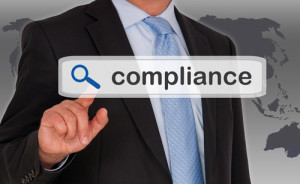It didn’t quite have the drama of the old prison movies with the governor calling at the very last minute to grant a stay of execution, but the CFPB’s proposal to push back the effective date of the TILA-RESPA Integrated Disclosure (TRID) rule until October 3 was a welcome reprieve, nonetheless.
What is less clear is whether the CFPB’s earlier peace offering to the industry “that our oversight of the implementation of the Rule will be sensitive to the progress made by those entities that have squarely focused on making good-faith efforts to come into compliance with the Rule on time” will still apply now that the industry expects to have two more months to get ready. (Actually, it wasn’t all that clear to begin with, since the CFPB never said how it would define “good-faith efforts” or how long the grace period would last.)
But despite the new timing, what hasn’t changed is what must be done. At a high level, TRID requires lenders to replace certain disclosures that are required to adhere to the Truth in Lending Act (TILA) and Real Estate Settlement Procedures Act (RESPA). Specifically, the Loan Estimate will replace the Good Faith Estimate and the initial TIL disclosure; while the Closing Disclosure will replace the Final TIL disclosure and the HUD-1 Settlement Statement. The new disclosures will retain some key data points from the disclosure forms being replaced and include new data points to provide consumers with additional information to assist them in making their financial decisions.
This brief overview sounds pretty simplistic and may make one wonder why there is much concern and angst in complying with these requirements. The issues surface when one attempts to dive into the details of the 1,888-page regulation. The model forms and instructions for completing the forms address most situations and provide some very specific requirements that must be adhered to, but there are also situations that are not as explicit. The complexities are furthered by changing timelines, role responsibilities, and the severity of non-compliance based on whether the liability falls under Regulation Z.
Having the systems in place to be able to prepare the disclosures is of extreme importance, but without detailed procedures, training, and clear understanding of roles and responsibilities with the various counterparties involved in the transaction, the risk of non-compliance is significant. Lenders need to be working with their service providers to participate in the user acceptance tests and obtain hands-on experience to train their staff to be able to create these new disclosures and understand the disclosures to explain them to consumers. For small lenders that may not have staff to update their policies or train their production team on the TRID rules, they should consider outsourcing this to service providers or coordinate with the various companies that provide such services.
If you are involved in the industry, whether you are a broker, lender, LOS provider, document provider, interface conduit, loan aggregator, content provider, settlement agent, aggregator, or third-party reviewer, ensure the senior management team knows the current status of your company’s TRID preparation. This knowledge allows management to allocate adequate resources, including bringing in external consulting resources if the preparation level warrants.
There are a significant number of articles addressing the state of the industry and whether the participants are prepared for the effective date. For additional clarity on the specifics of the TRID changes, one can find additional guidance in the marketplace prepared by attorneys, loan origination system providers, the MBA, the ABA, and even the CFPB. Of course, the CFPB is consistent in their approach of providing the equivalent of a police officer reading one his Miranda warning: the information they are sharing is not intended to be a substitute for the rules or official interpretations. The additional documents published by the CFPB do not supplant, augment, or alter the definitive requirements within the rules and official interpretations, but they can still provide assistance in understanding the basic requirements.
In the coming months we will learn how well the industry prepared for TRID. Hopefully at the end of this year, we’ll look back at the TRID effective date and be reminded of January 2000, when we realized our concerns over Y2K did not materialize. If this occurs, we will know it was due to extensive preparation, system updates, and employing sufficient resources to ensure a smooth transition coupled with updated procedures and adequate training. The additional two months to prepare are significant. Hopefully, we’ll all use the time wisely.

